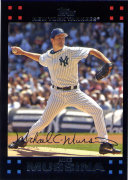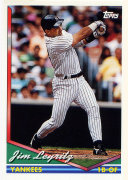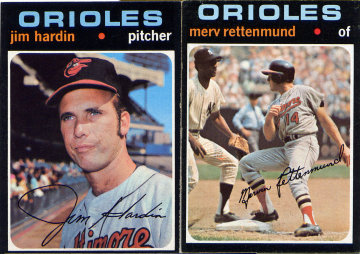 One of the happy side-effects of the Yankees’ general dominance over major league baseball since 1921 is that they have a postseason history with nearly every other team in the game. In the American League, only the White Sox, Blue Jays, and Rays have never faced the Yankees in the playoffs, and in the senior circuit, only the Rockies, Astros, Brewers, and Expos/Nationals have never faced the Yankees in the World Series (the ‘Spos/Nats have never been to the World Series, period), and the Brewers faced the Yankees in the 1981 Division Series.
One of the happy side-effects of the Yankees’ general dominance over major league baseball since 1921 is that they have a postseason history with nearly every other team in the game. In the American League, only the White Sox, Blue Jays, and Rays have never faced the Yankees in the playoffs, and in the senior circuit, only the Rockies, Astros, Brewers, and Expos/Nationals have never faced the Yankees in the World Series (the ‘Spos/Nats have never been to the World Series, period), and the Brewers faced the Yankees in the 1981 Division Series.
Of the 24 teams the Yankees have faced in the postseason, they’ve faced 22 of them since their lone meeting with the Phillies in the 1950 World Series (the exception being the Cubs, who they last faced in the 1938 Serious). To give you a sense of just how long it’s been since the Yankees swept Philadelphia’s Whiz Kids, the 1950 World Series was the last Fall Classic to feature two all-white teams.
That fact is not as trivial as it might sound. The Yankees’ struggles in the late 1960s and early 1970s had several sources, including the institution of the amateur draft and the corporate ownership of CBS, but their failure to properly exploit the African American talent pool was undeniably a contributing factor. When they finally emerged from that slumber, it was with black stars such as Mickey Rivers, Willie Randolph, Chris Chambliss, Roy White, Oscar Gamble, and Gamble’s replacement, Reggie Jackson.
Similarly, the Phillies’ surprising pennant in 1950 fed the organization’s resistance to integration. The 1950 Whiz Kids got their name not only because they won the pennant, but because they were the youngest team in the National League on both sides of the ball. In fact, the 1950 Phillies were the youngest pennant winners ever. The Phillies’ oldest regular was first baseman Eddie Waitkus (the player whose shooting the previous year inspired The Natural). Just one of the six men to make more than ten starts for them was over the age of 26, and future Hall of Famers Richie Ashburn and Robin Roberts were both just 23.
Assuming that young squad would only get better with age, the Phillies didn’t even begin scouting black players until 1954, when Roy Hamey took over as general manager following four seasons in which the Phillies finished between third and fifth place. The Phillies didn’t field their first black player until 1957, didn’t have an African-American starter until 1961, and didn’t have an African-American star until the arrival of Richie Allen in 1964.
That was awful timing for Allen, who despite one of the best rookie campaigns in major league history, fell victim to the Phillies infamous Phlop, in which they blew a 6.5-game lead over the final dozen games of the season thanks to a ten-game losing streak (during which Allen hit .415/.442/.634). Allen’s ensuing battles with the Philadelphia faithful as well as the organization’s brutal treatment of Jackie Robinson back in 1947 were key factors in Curt Flood’s decision to refuse to report to the Phillies after being traded from the Cardinals, ironically for Dick Allen, after the 1969 season. The Phillies wouldn’t return to the postseason until 1976 (again ironically with Dick Allen back in the fold as their first baseman), and despite the Philadelphia fans’ affection for center fielder Gary Maddox and a late-career cameo by Hall of Famer Joe Morgan on the superannuated 1983 pennant winners, the Phillies didn’t have a black superstar who was embraced by the city until the arrivals of Jimmy Rollins and Ryan Howard in the new millennium.







